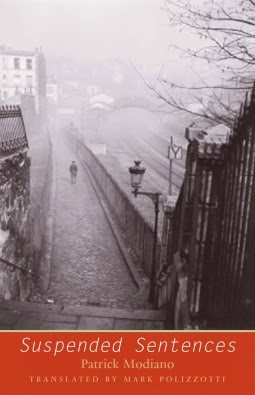I decided to give it a try. I probably won't manage a blackout, but I should be able to do more than five squares.
I didn't manage a Bingo, or maybe I did --if I shuffle these around, but since I didn't review a lot of them I won't claim a bingo. Perhaps someone will get some ideas for next time.
Eligible BINGOS: 5 spaces in a row: horizontally, vertically, diagonally or "Four Corner” (each of the four corners plus 1 more space, any space you wish. Extra entries for any squares beyond the first Bingo.
Just for fun and reference:
French Idioms and Proverbs by Vinchelés de Payen-Payne
FOURTH REVISED AND ENLARGED EDITION. LONDON
DAVID NUTT, 1905
DAVID NUTT, 1905
A1 A Fifty-Year Silence: Love, War, and a Ruined House in France by Miranda Richmond Mouillot
A2
A3 The Nightingale; Hannah, Kristin
A4
A5 several of these, but the ended up on other squares
B1 Liberty's Torch: The Great Adventure to Build the Statue of Liberty by Elizabeth Mitchell
B2
B3 A Paris Apartment by Michelle Gable My Review
B4 Self-Portrait in Green by Marie NDiaye (or A5) Originally publ in French in 2005, trans publ in 2014 My Review
B5
C1 All Our Worldly Goods; by Irène Némirovsky Written during WW2, published in French in 1947, and in English translation in 2008.
C2
C3
C4 The Dream Lover: A Novel of George Sand; Berg, Elizabeth
C5
D1 Dimanche and Other Stories; by Irène Némirovsky, Bridget Patterson (Translator)
D2 The Normandy diary of Marie-Louise Osmont. 1940-1944 by Marie-Louise Osmont, My review
D3
D4 Suspended Sentences: Three Novellas by Patrick Modiano My review
D5 A Palace in the Old Village by Tahar Ben Jelloun, a Moroccan/French writer. (translated from the French by Linda Coverdale) not exactly what we usually think of when we talk about the "ex-pat" life, but I think Mohammed's experiences qualify. My brief review.
E1 Flambé in Armagnac (Winemaker Detective Mysteries #7) ; Alaux, Jean-Pierre, Balen, Noël; Sally Pane (Translation)
E2 Guys Like Me; by Dominique Fabre, Howard Curtis (Translation) (this could go in B2, C3) My notes on my page: November (second half) 2015 Reading
E3 The Oysters of Locmariaquer by Eleanor Clark (could also be B1, D2)
E4
E5 The Red Notebook; Laurain, Antoine; Jane Aitken (Translation), Emily Boyce (Translation) Published April 7th 2015 by Gallic Books (first published March 5th 2014)
This is kind of flaky but here it is for what it's worth.





